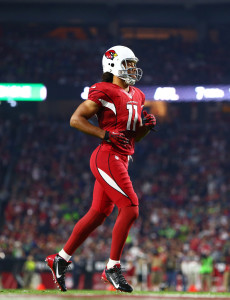Pending free agents:
- Danny Aiken, LS
- Akeem Ayers, OLB
- Alan Branch, DT
- Jonathan Casillas, LB
- Dan Connolly, G
- Stephen Gostkowski, K (franchised)
- Devin McCourty, S
- Stevan Ridley, RB
- Shane Vereen, RB
- Chris White, LB
Top 10 2015 cap hits:
- Darrelle Revis, CB: $25,000,000 (option)
- Tom Brady, QB: $14,000,000
- Jerod Mayo, LB: $10,287,500
- Rob Gronkowski, TE: $8,650,000
- Nate Solder, T: $7,438,000
- Sebastian Vollmer, T: $7,020,833
- Danny Amendola, WR: $5,700,000
- Brandon Browner, CB: $5,500,000
- Julian Edelman, WR: $4,656,250
- Kyle Arrington, CB: $4,625,000
Notable coaching changes:
- None
Draft:
- No. 32 overall pick
- Acquired fourth-round pick from Buccaneers in deal for Logan Mankins.
- Acquired sixth-round pick from Buccaneers in deal for Jonathan Casillas.
- Acquired seventh-round pick from Titans in deal for Akeem Ayers.
- Owe fifth-round pick to Buccaneers in deal for Jonathan Casillas.
- Owe sixth-round pick to Titans in deal for Akeem Ayers.
- Owe seventh-round pick to Rams in deal for Greg Salas.
Other:
- Current projected cap room (via Over the Cap): $4.75MM over projected cap
- Must exercise or decline fifth-year options for 2016 for DE/LB Chandler Jones, LB Dont’a Hightower.
- Top extension candidates: Darrelle Revis, Chandler Jones, Dont’a Hightower, Nate Solder
- Already turned down option for DL Vince Wilfork.
Overview:
The hype surrounding the Patriots last offseason was in regards to their additions, and the buildup proved to be warranted. Several pickups, including wideout Brandon LaFell and cornerbacks Darrelle Revis and Brandon Browner, helped put the team over the top as they won their fourth Super Bowl in franchise history.
The story this offseason may be the complete opposite, as the team could potentially lose several key contributors, including safety Devin McCourty.
The team’s biggest decision surrounds a player the Patriots could realistically keep. The Patriots hold a pricey team option on Revis, but all signs are pointing to the team declining the one-year deal. That would mean the team would have to address two sizable holes in the secondary.
If New England hopes to retain its premier defensive backs, the team will have to do some finagling to make the necessary cap room. This will mean veterans will be asked to take a pay cut, and if they refuse, their tenure with the Patriots may be finished.
As always, it should be an exciting offseason in New England.
Key Free Agents:
McCourty has established himself as one of the top safeties in the league since switching to the position in 2012. The former first-rounder has consistently finished atop Pro Football Focus’ rankings, and the 27-year-old is showing no signs of slowing down, as he’s missed only one game over the past three seasons.
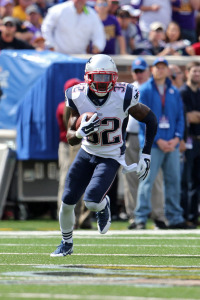 The Patriots surprised some earlier this week when they opted to not tag the All-Pro safety, instead opting for kicker Stephen Gostkowski. McCourty said it’s now “realistic” that he could be playing elsewhere in 2015, and that was the risk the Patriots were taking when the decided to not franchise the former first-rounder. As the bona fide top safety available this offseason, McCourty should have plenty of suitors to choose from.
The Patriots surprised some earlier this week when they opted to not tag the All-Pro safety, instead opting for kicker Stephen Gostkowski. McCourty said it’s now “realistic” that he could be playing elsewhere in 2015, and that was the risk the Patriots were taking when the decided to not franchise the former first-rounder. As the bona fide top safety available this offseason, McCourty should have plenty of suitors to choose from.
The Patriots will presumably be in on the player, but it’s uncertain what they’d be willing to offer. Conventional wisdom would suggest that McCourty is less valuable to the Patriots considering the presence of Revis, who can be relied on to shut down the opponent’s top receiver. This allows McCourty to shadow the Patriots’ No. 2 cornerback or linebackers, while also spying on the quarterback. That’s not a ridiculous task to expect from any safety, meaning the Patriots could reasonably replace McCourty will a less expensive (albeit less talented) alternative.
Of course, that final point is made moot if Revis decides to bolt from New England. The cornerback’s cap hit would be worth $25MM if the Patriots opt to pick up his option, and at that price, such a move would be a bit of a surprise. The ideal situation for the team would be to decline the option, and re-sign the veteran to a deal that satisfies both parties. Of course, there’s plenty of risk in letting Revis test the free agent waters, especially with potential suitors, including Rex Ryan’s Bills, licking their chops at the prospect of signing the Pro Bowler. PFR’s Luke Adams had examined the various options the Patriots have in regards to the All-Pro cornerback last month.
If the Patriots decide to decline the option, it has to be assumed that Revis would instantly become the team’s top priority in free agency. The cornerback had perhaps the biggest impact of any free agent addition in 2014, and his presence was a big reason why the Patriots won the Super Bowl.
The Patriots also made news today when they declined to pick up the option on defensive tackle Vince Wilfork, making the 33-year-old an unrestricted free agent. The former first-rounder was limited by a torn Achilles in 2013, but the lineman seemed to be back to full strength in 2014. PFF’s advanced metrics ranked Wilfork as the sixth-best defender on the Patriots, and his run defense rating was far and away the best score on the team. Of course, the defensive tackle isn’t getting any younger, and his $8.9MM cap hit for next season would have been hard to justify, especially considering the players the Patriots may be looking to re-sign. Wilfork could very well return to New England on a cheaper contract, but based on his reaction to taking a pay cut last season, it seems unlikely that he’ll take too much of a discount.
The Patriots will also be looking to bring back several offensive contributors from last season. Running back Shane Vereen had his best season in 2014, playing in all 16 games for the first time in his career. The former second-rounder is a proven threat catching the ball, recording 52 receptions for 447 yards last season. Meanwhile, fellow running Stevan Ridley is also a free agent. The 26-year-old is only two seasons removed from a 1,200-yard season, but the presence of LeGarrette Blount could mean that Ridley’s time in New England has come to an end.
Offensive lineman Dan Connolly proved to be a reliable presence in multiple spots, and the Patriots seem to value his versatility.
Finally, mid-season additions Akeem Ayers and Jonathan Casillas are still young enough to deserve a second look.
Possible Cap Casualties:
If the Patriots hope to keep both Revis and McCourty, someone is going to have to either take a pay cut or move on. The Patriots already cleared up some room by declining Wilfork’s option, and the team could clear up an additional $7MM by releasing another defensive veteran, linebacker Jerod Mayo.
The former first-round pick has only played 12 games over the past two seasons as he’s recovered from a torn pectoral muscle and a torn patellar tendon. While the 29-year-old could now be considered an “injury risk,” there’s no denying his impact on the defense. Despite missing more than half his team’s games last season, Mayo still played the 14th-most snaps on the Patriots defense, and PFF ranked him as a top-11 defender on the squad. Given the presence of linebackers Dont’a Hightower, Jamie Collins and Chandler Jones, Mayo is certainly expendable. However, considering the versatility of the Patriots defenders, Mayo could still have a major impact on the team if he sticks around.
Other than Mayo, no other Patriots would immediately create an abundance of cap room if they were released. Receiver Danny Amendola’s $5.7MM cap hit doesn’t necessarily reflect his production (81 receptions, 833 yards, three touchdowns in two seasons with Patriots), but his postseason performance may indicate that he’s getting more comfortable with the team’s offense. Cornerbacks Brandon Browner and Kyle Arrington combine for a $10MM cap hit, and the team has enough depth in the secondary to move on from the duo. Of course, those potential moves would depend on where Revis and McCourty end up.
Positions Of Need:
Many of the Patriots’ offseason “needs” will depend on where their own free agents land. If Revis and McCourty sign elsewhere, the team will certainly be seeking some reinforcement in their secondary. Both players are the class of their respective positions, so it’s unlikely the situation will resemble last offseason, when the Patriots replaced the departing Aqib Talib with Revis.
With Wilfork presumably moving on, the team may be looking to fill a 325-pound hole on their defensive line. 24-year-old Sealver Siliga played well in limited snaps last season, and the former undrafted rookie could be ready for a bigger role in the defense. The Patriots essentially red shirted their first-round pick from last season, defensive lineman Dominique Easley. The 23-year-old is presumably a key piece for the future of the franchise, but it’s uncertain if the Florida alumnus is ready for a full-time role in the NFL.
On offense, the Patriots could potentially lose a pair of running backs in Vereen and Ridley. While there are plenty of buy-low candidates for the team to consider, Bill Belichick could be just as content going forward with his current group. Besides Blount, the team could turn to Jonas Gray, Brandon Bolden, James White, or Tyler Gaffney. Based on the Patriots unpredictability at the position, there doesn’t need to be any panic in retaining the pair of free agents.
The team has been rumored to be looking for a “deep threat” receiver in recent years, but the success of the offense in 2014 may indicate that the team doesn’t need any additional weapons. The team knew what they had in Julian Edelman and Rob Gronkowski, and the team got some much-needed production from LaFell in 2014, as the wideout finished with career-highs in receptions (74), yards (953) and touchdowns (seven). Amendola came on strong during the postseason, and tight end Tim Wright (acquired in the Logan Mankins trade) proved to be a red-zone threat with seven touchdowns last season.
The offensive line is one area where the team could certainly use some depth. The group received plenty of criticism following the Patriots’ slow start in 2014, and their production down the stretch was a big reason for the team’s turnaround. However, the squad still featured a number of unheralded players, as half of the offensive line were originally undrafted rookies (and another three, Marcus Cannon, Bryan Stork and Cameron Fleming, were drafted in the fourth round or later). While the team got some unexpected production from this group (particularly from Ryan Wendell and Stork), the line could use an additional veteran presence.
Extension Candidates/Contract Issues:
If the Patriots wanted to clear up additional cap room for this offseason, the team could work on an extension with offensive lineman Nate Solder. The former first-round pick has a cap hit worth $7.5MM next season, and while the team could get most of that money back by cutting him after June 1st, it seems unlikely that they’d just cut bait with the 26-year-old. Solder is entering the final year of his contract, so it may be in the Patriots best interest to work on an extension now.
Overall Outlook:
When Belichick has opted to let his veteran talent exit via free agency or trade, he’s typically been correct with his assessment. Ty Law, Richard Seymour, and even Logan Mankins failed to show the type of talent they displayed in New England following their departures, allowing the coach some leeway when he opts to let a beloved or contributing member of the team loose.
However, considering the talent the Patriots may be losing, it would be tough for Belichick to justify losing two key members of the secondary. Revis and McCourty had a significant impact on the Super Bowl-winning defense, and their presence would be difficult to replace, whether via trade, free agency or the draft.
Of course, the Patriots have plenty of flexibility in how they can approach the offseason. Regardless of their moves, with Belichick and Tom Brady back for another season, the Pats should still be considered the class of the AFC.
Information from Over The Cap was used in the creation of this post. Photo courtesy of USA Today Sports Images.
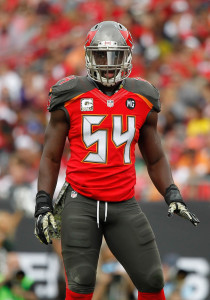
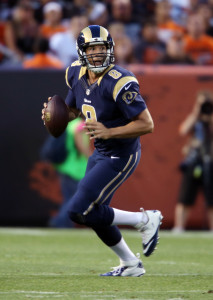

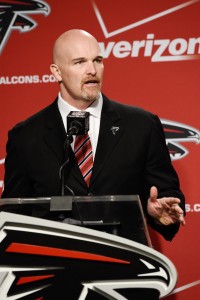
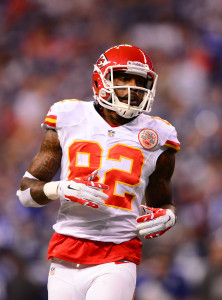 nd an offensive line that saw just one player, free agent center
nd an offensive line that saw just one player, free agent center 